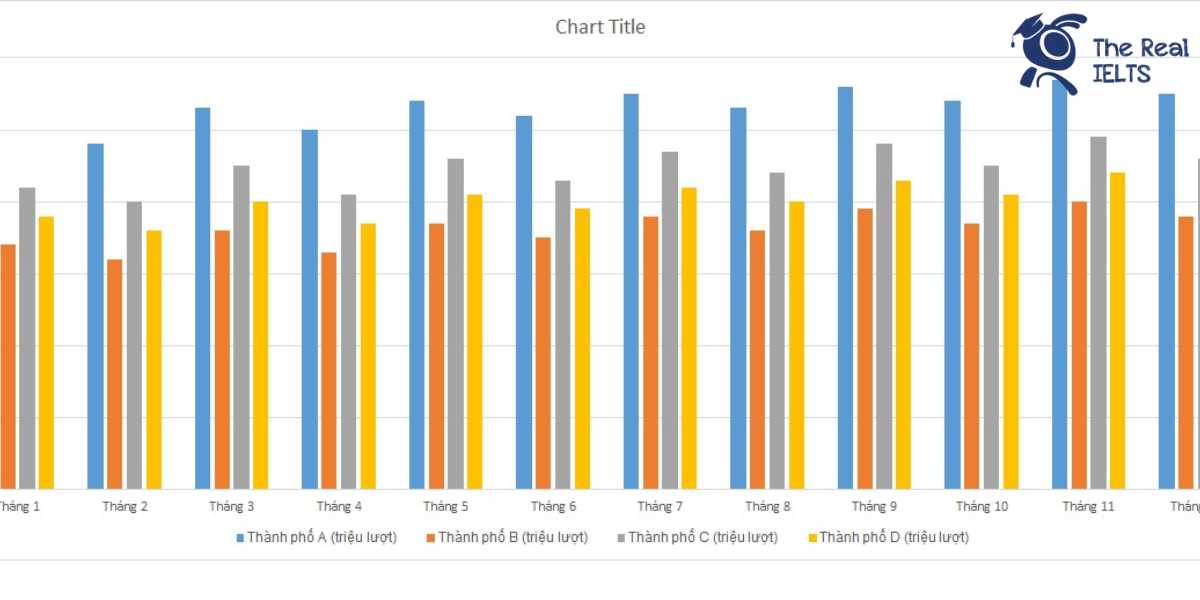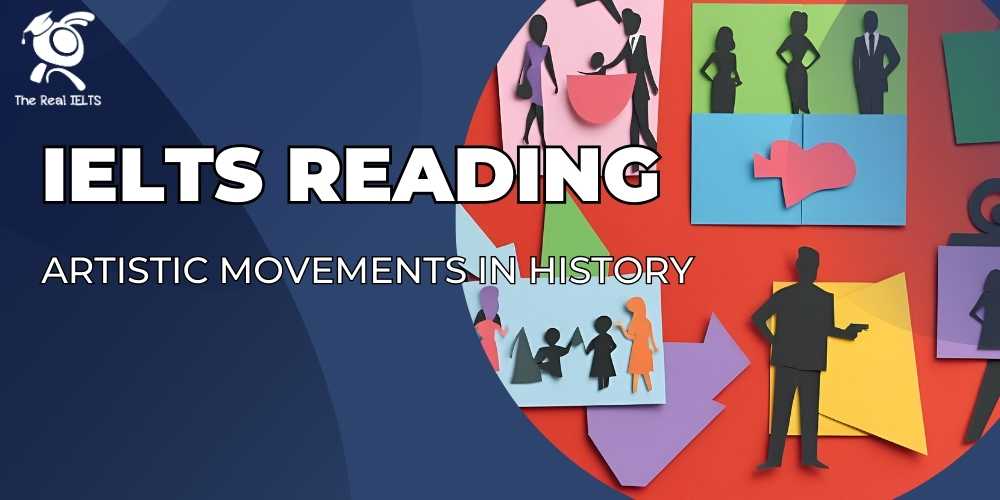IELTS Reading 100: Development of smart cities là chủ đề thuộc chuỗi bài luyện tập 11 dạng bài IELTS Reading và các bài tập luyện tập.
Học lại bài cũ: IELTS Reading 99: The impact of technology on transportation.
IELTS Reading: The future of blockchain technology
The Rise of Smart Cities
In recent years, the concept of smart cities has gained momentum across the globe as urban areas strive to enhance the quality of life for their residents. Smart cities integrate advanced technologies and data-driven solutions to improve urban infrastructure, service delivery, and resource management. This transformation aims not only to address the challenges of rapid urbanization but also to foster sustainable development.
Key Features of Smart Cities
Smart cities are characterized by their use of information and communication technology (ICT) to connect various components of urban life. Key features often include intelligent transportation systems that optimize traffic flow, smart energy grids that enhance energy efficiency, and comprehensive waste management systems that promote recycling. These features are designed to create a more efficient, eco-friendly urban environment, ultimately contributing to the well-being of citizens.
Technological Innovations
Technological innovations play a crucial role in the development of smart cities. The Internet of Things (IoT) allows for the interconnection of devices, enabling real-time data collection and analysis. Sensors placed throughout the city can monitor air quality, noise levels, and energy consumption, providing valuable insights that inform urban planning decisions. Furthermore, artificial intelligence (AI) enhances data processing capabilities, allowing for predictive analytics that can anticipate issues before they arise.
Challenges and Considerations
Despite the potential benefits, the development of smart cities faces several challenges. One major concern is data privacy and security. With the vast amount of data collected, ensuring that citizens’ information is protected is paramount. Additionally, the digital divide poses a significant challenge, as not all residents may have equal access to technology and digital services. This inequality can exacerbate existing social disparities, making it essential for city planners to consider inclusive strategies.
Global Examples
Several cities around the world are leading the way in smart city initiatives. For instance, Singapore has implemented an extensive smart traffic management system that uses real-time data to adjust traffic signals and reduce congestion. Barcelona has embraced smart waste management solutions that optimize collection routes, resulting in lower operational costs and improved cleanliness. These examples illustrate the potential of smart cities to enhance urban living conditions while addressing environmental concerns.
Conclusion
The development of smart cities represents a significant step towards creating sustainable and livable urban environments. By leveraging technology and innovation, cities can improve the efficiency of their services and foster a higher quality of life for their residents. However, addressing the challenges of privacy, security, and accessibility will be critical to ensuring that the benefits of smart cities are realized by all citizens. As urbanization continues to rise, the need for smart solutions will only become more pressing, making this an area of critical importance for future urban development.
Questions
1. Multiple Choice
- What is the primary goal of developing smart cities? A) To reduce urban population
B) To enhance the quality of life for residents
C) To increase the use of fossil fuels
D) To limit technological innovations - Which technology is essential for monitoring urban environments in smart cities?
A) Blockchain
B) Artificial Intelligence
C) Virtual Reality
D) Quantum Computing
2. True/False/Not Given
- Smart cities only focus on environmental sustainability.
- Data privacy is a significant concern in the development of smart cities.
- All urban residents have equal access to technology in smart cities.
3. Yes/No/Not Given
- The passage states that smart cities can improve service delivery.
- The author believes that smart cities will completely eliminate social disparities.
- The use of IoT in smart cities is increasing.
4. Matching Information
- Match the following cities with their respective smart city initiatives:
a) Singapore
b) Barcelona
c) New York
d) Tokyo
5. Matching Headings
- Choose the correct heading for each paragraph from the list below:
A) The Role of Technology in Urban Development
B) Examples of Smart Cities in Action
C) Understanding Smart Cities
D) Challenges Faced by Smart Cities
6. Matching Sentence Endings
- Complete the following sentences with the correct ending:
a) Smart cities utilize technology to…
b) Data collected in smart cities helps…
c) Ensuring data privacy is important because…
7. Sentence Completion
- Smart cities aim to create a more _______ urban environment.
- The use of _______ allows devices to be interconnected in smart cities.
8. Summary Completion
- The development of smart cities is aimed at enhancing urban living by using _______ and _______ solutions.
9. Diagram Label Completion
- Complete the labels in the diagram showing the components of a smart city, such as _______ systems, _______ management, and _______ grids.
10. Short Answer Questions
- What is one challenge mentioned in the passage regarding the development of smart cities?
- Name one city that has implemented smart traffic management solutions.
11. Table/Flowchart/Note Completion
Complete the table below with information from the passage about the benefits and challenges of smart cities:
| Aspect | Description |
|---|---|
| Benefits | |
| Improved Efficiency | |
| Enhanced Sustainability | |
| Better Quality of Life | |
| Challenges | |
| Data Privacy Concerns | |
| Digital Divide | |
| Social Disparities |
Đáp án
1. Multiple Choice
- B) To enhance the quality of life for residents
- B) Artificial Intelligence
2. True/False/Not Given
- False
- True
- False
3. Yes/No/Not Given
- Yes
- No
- Yes
4. Matching Information
- a) Singapore – Intelligent traffic management system
b) Barcelona – Smart waste management solutions
c) New York – (Not mentioned in the passage)
d) Tokyo – (Not mentioned in the passage)
5. Matching Headings
A) The Role of Technology in Urban Development – (Paragraph not specifically in passage)
B) Examples of Smart Cities in Action – Paragraph 4
C) Understanding Smart Cities – Paragraph 1
D) Challenges Faced by Smart Cities – Paragraph 3
6. Matching Sentence Endings
a) Smart cities utilize technology to improve urban infrastructure.
b) Data collected in smart cities helps inform urban planning decisions.
c) Ensuring data privacy is important because it protects citizens’ information.
7. Sentence Completion
- Smart cities aim to create a more efficient urban environment.
- The use of IoT (Internet of Things) allows devices to be interconnected in smart cities.
8. Summary Completion
- The development of smart cities is aimed at enhancing urban living by using technology and data-driven solutions.
9. Diagram Label Completion
- Complete the labels in the diagram showing the components of a smart city, such as intelligent transportation systems, waste management, and energy grids.
10. Short Answer Questions
- One challenge mentioned in the passage regarding the development of smart cities is data privacy and security.
- One city that has implemented smart traffic management solutions is Singapore.
11. Table Completion
| Aspect | Description |
|---|---|
| Benefits | |
| Improved Efficiency | Reduces operational costs and enhances service delivery. |
| Enhanced Sustainability | Promotes eco-friendly practices and resource management. |
| Better Quality of Life | Improves living conditions and urban experiences. |
| Challenges | |
| Data Privacy Concerns | Protecting citizens’ information collected through technology. |
| Digital Divide | Unequal access to technology and services among residents. |
| Social Disparities | Existing inequalities may be exacerbated by smart city initiatives. |
IELTS Reading: Step into the World of Smart City Living
A
Imagine a city where traffic flows smoothly, energy is used efficiently, and residents can monitor their homes with a tap on their smartphones. This is the promise of smart city living—a futuristic vision that is steadily becoming a reality. Across the globe, urban areas are adopting cutting-edge technologies to address modern challenges such as overpopulation, pollution, and resource scarcity. From Singapore to Copenhagen, smart cities are redefining how people live, work, and interact with their surroundings.
B
At the heart of a smart city is the Internet of Things (IoT), a network of connected devices that collect and share data in real time. Sensors embedded in roads, buildings, and even waste bins communicate with central systems to optimize city operations. For example, in Barcelona, smart traffic lights adjust their timing based on real-time traffic conditions, reducing congestion and cutting carbon emissions by up to 20%. Similarly, in South Korea’s Songdo, an entire city built from scratch, pneumatic tubes whisk away rubbish to underground processing centers, eliminating the need for noisy garbage trucks.
C
Energy management is another cornerstone of smart cities. Traditional power grids are being replaced with smart grids that balance supply and demand more effectively. In Amsterdam, for instance, households are equipped with smart meters that encourage residents to use electricity during off-peak hours, lowering costs and easing pressure on the system. Renewable energy sources, such as solar panels and wind turbines, are integrated into these grids, making cities less reliant on fossil fuels. Experts estimate that such innovations could reduce urban energy consumption by as much as 30% over the next decade.
D
However, the transition to smart city living is not without its challenges. Privacy concerns loom large as vast amounts of data are collected from citizens daily. Critics argue that constant monitoring—whether through surveillance cameras or IoT devices—could erode personal freedoms. In response, governments and tech companies are developing strict regulations and encryption methods to protect sensitive information. Still, striking a balance between innovation and individual rights remains a contentious issue.
E
Moreover, the cost of building or retrofitting cities with smart technology can be staggering. Developing nations, in particular, may struggle to fund such projects, potentially widening the gap between wealthy and poorer regions. Yet, proponents of smart cities argue that the long-term benefits—lower operating costs, improved quality of life, and environmental sustainability—justify the initial investment. Pilot programs in places like India’s Gujarat International Finance Tec-City (GIFT City) demonstrate that even emerging economies can embrace this model with careful planning.
F
For residents, the shift to smart city living offers both convenience and empowerment. Mobile apps allow people to pay bills, report potholes, or track public transport in real time. In Singapore, the Smart Nation initiative has introduced driverless buses and telemedicine services, enabling elderly citizens to access healthcare without leaving home. While some fear that over-reliance on technology could alienate certain groups, such as the elderly or less tech-savvy, cities are increasingly offering training programs to bridge this digital divide.
G
As urban populations continue to grow—projected to reach 68% of the global total by 2050—smart cities may hold the key to sustainable living. By blending technology with thoughtful urban planning, these cities aim to create environments that are not only efficient but also livable. The journey toward this vision is just beginning, and while obstacles remain, the potential rewards could reshape the future of humanity’s urban experience.
Questions
Questions 1-6
Match each city or place with the correct description (A-F). There are more descriptions than cities/places, so not all will be used.
- Barcelona
- Songdo
- Amsterdam
- Singapore
- Gujarat International Finance Tec-City (GIFT City)
- Copenhagen
A. A city where rubbish is transported underground using advanced technology.
B. A place experimenting with smart city ideas in a developing country.
C. A city using smart traffic lights to reduce pollution.
D. A location with driverless buses and telemedicine services.
E. A city replacing traditional energy systems with smart grids and meters.
F. A city known for its extensive use of wind turbines in urban areas.
Questions 7-10
Complete the summary below using NO MORE THAN TWO WORDS from the passage.
The concept of smart cities relies heavily on the (7) __________ of Things to connect devices and improve efficiency. While these cities promise benefits like reduced (8) __________ and better energy use, they also face issues such as (9) __________ concerns and high costs. Supporters believe the long-term advantages, including environmental (10) __________, outweigh these challenges.
Questions 11-13
Answer the following questions with YES, NO, or NOT GIVEN.
11. Does the passage suggest that all smart cities will eliminate garbage trucks completely?
12. Are privacy regulations fully resolving concerns about data collection in smart cities?
13. Is the population of smart cities expected to double by 2050?
Answer Key (for reference)
1-6
- C
- A
- E
- D
- B
- NOT USED
7-10
7. Internet
8. Congestion
9. Privacy
10. Sustainability
11-13
11. NO
12. NO
13. NOT GIVEN
IELTS Reading: Step into the World of Smart City Living Phần 2
A
Picture a city where streetlights dim when no one is around, public buses predict your arrival time, and air quality is monitored in real time. This is the essence of smart city living, a concept that blends technology with urban life to create more sustainable and efficient environments. As the world’s population swells, with over half now living in cities, governments are turning to smart solutions to tackle issues like waste, transportation, and energy overuse.
B
One standout example is Masdar City in the United Arab Emirates, a planned urban area designed to be carbon-neutral. Here, solar panels power most buildings, and a network of driverless electric pods replaces traditional cars. The city’s layout maximizes shade and airflow, reducing the need for air conditioning in the desert heat. By 2030, Masdar aims to house 50,000 residents, proving that eco-friendly living can thrive even in extreme climates.
C
Transportation lies at the core of many smart city initiatives. In Helsinki, Finland, an app called Whim allows users to plan and pay for all their travel—whether by bike, bus, or taxi—in one seamless platform. The goal is to make public transport so convenient that owning a car becomes unnecessary. Early data suggests that Whim users have reduced their car usage by 15%, easing traffic and lowering emissions in the process.
D
Waste management is also being revolutionized. In San Francisco, smart bins equipped with sensors alert collection crews when they’re full, cutting down on unnecessary trips. This system has boosted recycling rates by 25%, as the bins can sort materials automatically. Meanwhile, in Japan’s Yokohama, a smart water system detects leaks instantly, saving millions of liters annually and reducing repair costs for the city.
E
Yet, not everything about smart cities is universally praised. The reliance on constant data collection raises red flags for some. In Toronto, a proposed smart neighborhood by Sidewalk Labs, a Google affiliate, sparked controversy over how residents’ data would be used. Critics feared it could become a testing ground for corporate surveillance rather than a public good. The project was abandoned in 2020, highlighting the tension between innovation and trust.
F
Cost is another hurdle. Retrofitting older cities like London or New York with smart infrastructure requires billions of dollars, a sum that many municipalities cannot easily afford. However, smaller-scale successes offer hope. In Columbus, Ohio, a grant-funded project introduced smart traffic systems that reduced commute times by 10%. Such examples show that incremental changes can pave the way for broader adoption.
G
Ultimately, smart cities aim to empower residents as much as they streamline operations. In Stockholm, citizens use an app to report issues like broken streetlights directly to city officials, speeding up repairs. Children in smart schools benefit from sensors that adjust lighting and temperature for better learning conditions. While the road to fully realized smart cities is long, these advancements suggest a future where urban life is more connected, responsive, and green.
Questions
Questions 1-5
Choose the correct letter A-G to match each city with its description.
- Masdar City
- Helsinki
- San Francisco
- Toronto
- Columbus
A. A city with a smart traffic system reducing travel time.
B. A proposed smart area abandoned due to privacy worries.
C. A place where smart bins improve recycling efforts.
D. A desert city using solar energy and driverless pods.
E. A city with an app integrating all transport options.
Questions 6-9
Complete the sentences below with NO MORE THAN THREE WORDS from the passage.
6. Smart cities use technology to address problems like __________.
7. In Yokohama, a smart system helps save __________ annually.
8. The Sidewalk Labs project in Toronto raised concerns about __________.
9. Stockholm’s app allows residents to report __________ quickly.
Questions 10-13
Answer the following questions with TRUE, FALSE, or NOT GIVEN.
10. Masdar City plans to be completely car-free by 2030.
11. The Whim app in Helsinki has eliminated car ownership entirely.
12. Smart bins in San Francisco can sort waste without human help.
13. London has fully adopted smart infrastructure across the city.
Answer Key (for reference)
1-5
- D
- E
- C
- B
- A
6-9
6. Waste, transportation
7. Millions of liters
8. Corporate surveillance
9. Broken streetlights
10-13
10. NOT GIVEN
11. FALSE
12. TRUE
13. FALSE















